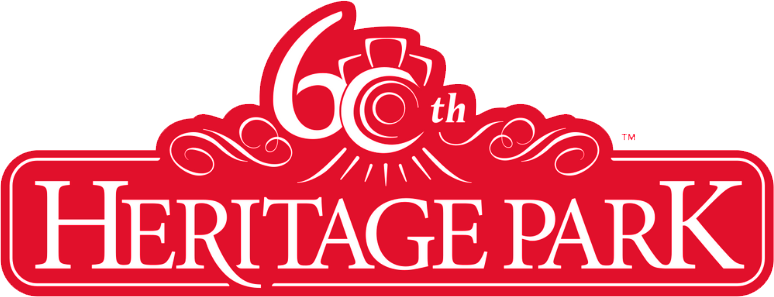Railway Days is right around the corner so we’ve compiled a list of the top 5 facts about the introduction of railways to Alberta and the rest of western Canada in order to pique your interest even more! Check it out and see how many you know.
1. Calgary’s population doubled overnight
According to Grant MacEwan, due to massive influx of railroad workers in 1883, Calgary’s population doubled in a single day! MacEwan stated that new tents appeared rapidly along the east side of the Elbow River and that this impressive increase in the population resulted in both the nearby I.G. Baker Company (which has a replica built in Heritage Park) and the Hudson’s Bay Company would have completely bare shelves by the end of each day.
You can find the replica of I.G. Baker Company in the Settlement area of the Park.
2. The last spike was meant to be made out of gold or silver
Since the construction of the Canadian Pacific Railway (CPR) was such a monumental task, it was thought that the last spike to be driven into the ground at Craigellachie, British Columbia, would be made out of a more precious metal, such as gold or silver, in order to commemorate this achievement.
However, when it came time to drive the last spike into the earth, Sir William van Horne, who was overseeing the construction of the CPR decided it was much more practical to simply use an iron spike, same as the rest of the railway.
Van Horne stated [when asked if the spike would be made out of gold or silver] “No. The last spike will be as good an iron spike as there is between Atlantic and Pacific – and anybody who wants to see it driven will have to pay full price.”
3. Before there were any railways, there were bull-trains
In order to transport large amounts of cargo, without the use of railways, wagons pulled by oxen were used. These “bull-trains” would travel 1000 miles (or 1609 kilometers) from Winnipeg all the way to Fort Edmonton, and eventually Calgary, carrying massive amounts of cargo.
The trails that these bull-trains rode on were so heavily used that deep ruts began to form in the earth. These ruts would not start to disappear until the branch lines of the Alberta Railway and the Calgary-Fort Macleod line were completed in 1892. Following those railway completions, rail would became the preferred method of travel for cargo.
Heritage Park’s very own I.G. Baker Company used bull-trains for much of their cargo hauling and had 320 bulls and dozens of large wagons to service them back in the mid-1880s. It’s said that after I.G. Baker Company’s first winter in Calgary, their wagons hauled 15,000 buffalo hides to Fort Benton in Montana.
4. The Edmonton-Calgary feud is historic
On July 21, 1890, ground was broken in Calgary in honour of construction beginning on the Calgary-Edmonton railroad. According to Grant MacEwan, there was a celebration of two thousand people and a roasted ox for the people to eat. After a speech about the prosperity that was making its way to Calgary, an Edmonton man by the name of Thomas Smith proclaimed that Edmonton’s soil was superior, as was everything that was grown in it. Luckily, MacEwan states that since the crowd that day was in a “benevolent mood” no violence came of it.
5. CPR Construction Car #76
One of the most historically significant railway coaches in North America calls Heritage Park home! C.P.R. Construction Car #76 was furnished to be a business office and living quarters for contractors building the Canadian Pacific Railway in the late-1800s. This car was used to transport several dignitaries to Craigellachie, British Columbia so that they could attend the Last Spike ceremony on November 7, 1885.
You can find C.P.R. Construction Car #76 in the Railway Car Shop, located in the Village Centre of the Park.

